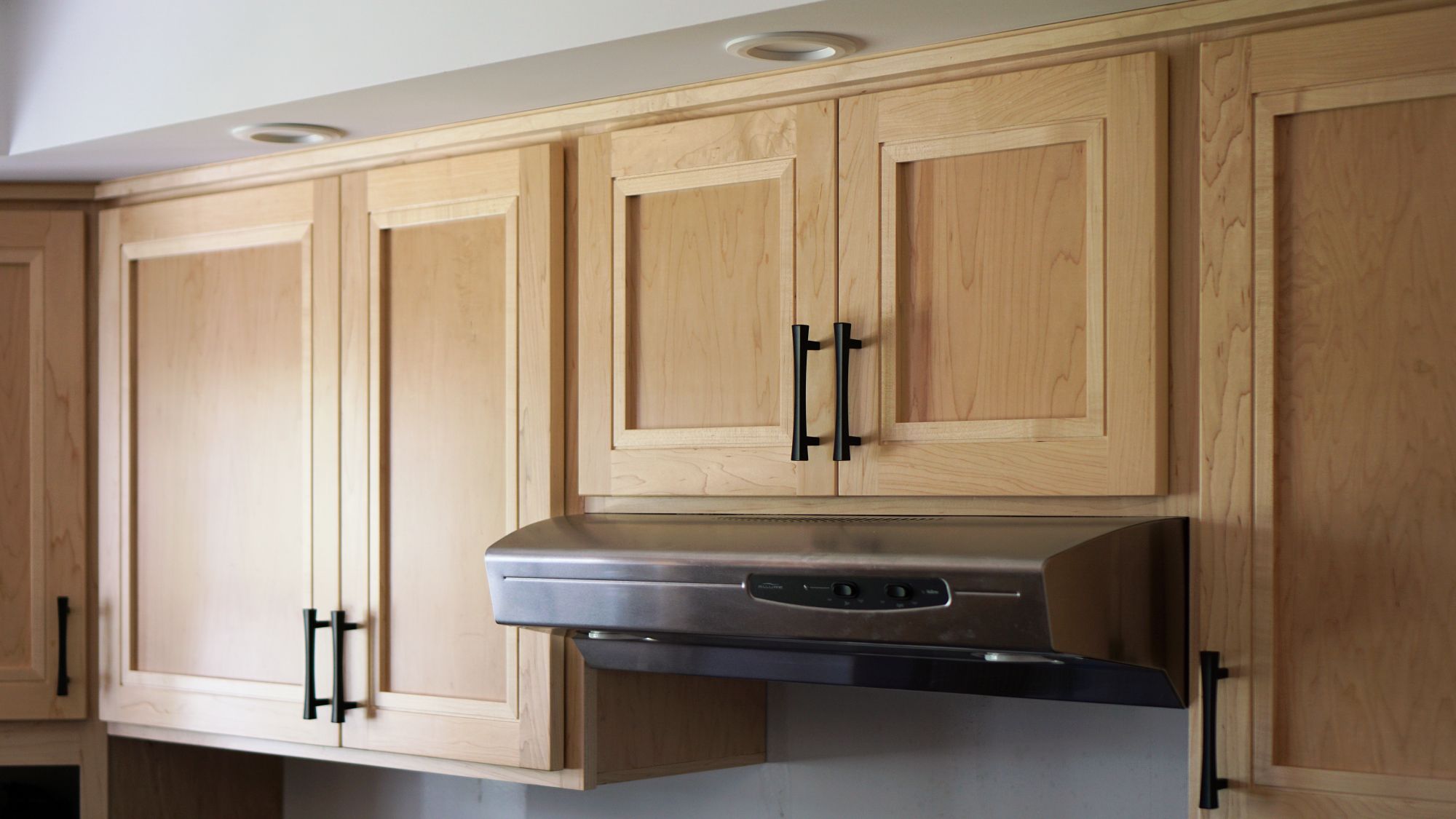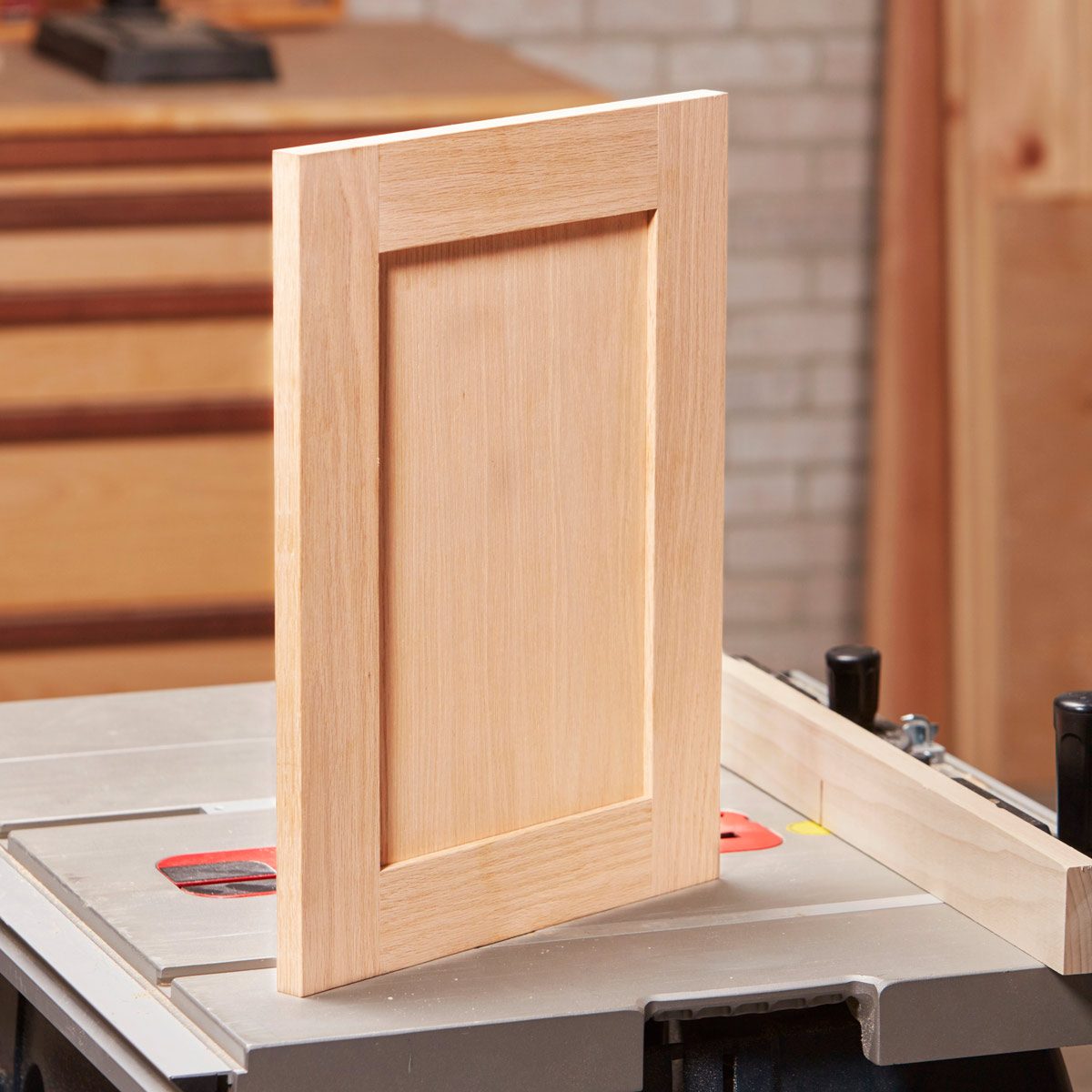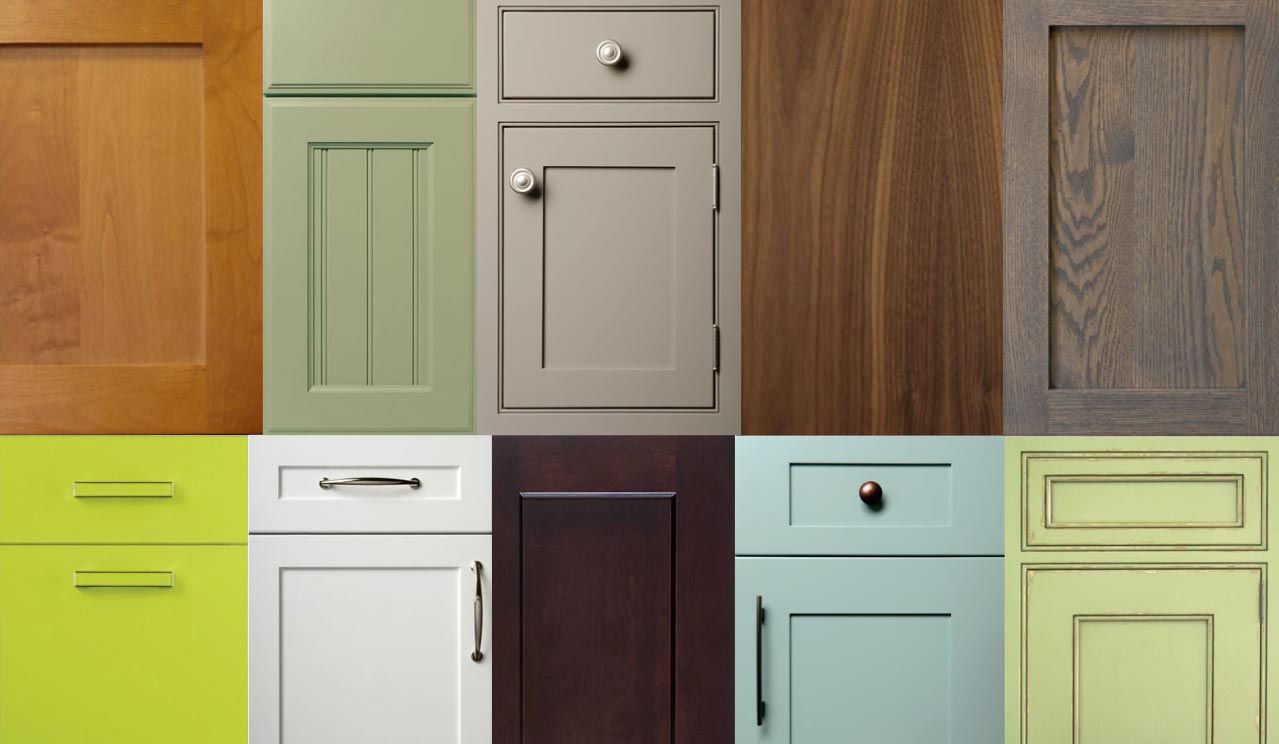Types of Kitchen Cabinet Doors

Kitchen cabinet doors are a crucial element in kitchen design, influencing both functionality and aesthetics. The choice of door style can significantly impact the overall look and feel of the kitchen, reflecting personal preferences and the desired ambiance. Understanding the various types of cabinet doors, their construction, and their pros and cons is essential for making informed decisions during kitchen renovations or new construction.
Types of Kitchen Cabinet Doors
The choice of cabinet door style is a matter of personal preference, but each type offers distinct features and benefits. Here are some of the most common types of kitchen cabinet doors:
- Slab Doors: Slab doors are the simplest and most economical type of cabinet door. They are characterized by a flat, smooth surface without any raised panels or decorative elements. Slab doors are often used in modern or contemporary kitchens, as they offer a clean and minimalist aesthetic. They are also easy to clean and maintain, making them a practical choice for busy kitchens.
- Raised Panel Doors: Raised panel doors feature a recessed center panel that is raised above the surrounding frame. This creates a classic and traditional look, often found in traditional or farmhouse-style kitchens. Raised panel doors are typically made from wood and can be stained or painted to match the desired color scheme. They offer a more intricate and elegant appearance compared to slab doors.
- Recessed Panel Doors: Recessed panel doors are similar to raised panel doors but with the panel recessed below the surrounding frame. This creates a subtle and understated look, often used in contemporary or transitional kitchens. Recessed panel doors can be made from various materials, including wood, MDF, and even glass. They provide a clean and sophisticated appearance while maintaining a sense of depth and texture.
- Shaker Doors: Shaker doors are characterized by a simple, rectangular frame with a flat center panel. This type of door is known for its timeless and versatile design, suitable for a wide range of kitchen styles. Shaker doors can be made from various materials, including wood, MDF, and painted finishes. They offer a clean and functional look, emphasizing simplicity and practicality.
- Beadboard Doors: Beadboard doors feature a series of vertical or horizontal beading on the door surface, creating a textured and visually appealing design. This type of door is often found in coastal or farmhouse-style kitchens, adding a touch of rustic charm. Beadboard doors are typically made from wood and can be stained or painted to match the desired aesthetic.
- Glass Doors: Glass doors are a popular choice for kitchen cabinets, as they allow for a glimpse of the contents within. They can be used for displaying decorative items, glassware, or even pantry staples. Glass doors are typically made from tempered glass, which is durable and resistant to breakage. They can be framed with wood or metal, adding to the overall design of the kitchen.
Construction Techniques: Kitchen Cabinet Door Construction

Kitchen cabinet doors are crafted using various construction techniques, each with its own set of advantages and disadvantages. The choice of construction technique depends on factors such as the desired aesthetic, budget, and the complexity of the design.
Frame and Panel Doors
Frame and panel doors are a traditional and popular choice for kitchen cabinets. They consist of a frame made from solid wood or wood veneer, which is then joined to a panel that is typically made from plywood or medium-density fiberboard (MDF).
- Construction Steps
- Cutting: The frame pieces are cut to size using a table saw or chop saw. The panel is cut to fit the inside of the frame.
- Joining: The frame pieces are joined together using mortise and tenon joints, dado joints, or rabbet joints. The panel is then inserted into the frame and secured with glue and screws or nails.
- Finishing: The door is then sanded smooth and finished with paint, stain, or varnish.
- Advantages
- Durability: Frame and panel doors are known for their durability and strength.
- Versatility: They can be designed in a variety of styles, from traditional to modern.
- Customizable: They can be easily customized with different panel designs, molding, and hardware.
- Disadvantages
- Complexity: Constructing frame and panel doors requires more skill and time than other types of doors.
- Cost: They can be more expensive than other types of doors due to the labor involved.
Slab Doors
Slab doors are a simpler and more economical option than frame and panel doors. They are made from a single piece of material, typically plywood, MDF, or solid wood.
- Construction Steps
- Cutting: The slab is cut to size using a table saw or chop saw.
- Finishing: The door is then sanded smooth and finished with paint, stain, or varnish.
- Advantages
- Simplicity: Slab doors are relatively easy to construct.
- Cost-effectiveness: They are typically less expensive than frame and panel doors.
- Modern Aesthetics: They offer a clean and minimalist look that is popular in modern kitchens.
- Disadvantages
- Less Durable: Slab doors are less durable than frame and panel doors, especially in high-traffic areas.
- Limited Design Options: They offer fewer design options than frame and panel doors.
Mitered Doors
Mitered doors are made from multiple pieces of wood that are joined together at 45-degree angles. They are often used for shaker-style cabinets and offer a more intricate look than slab or frame and panel doors.
- Construction Steps
- Cutting: The pieces of wood are cut to size using a table saw or chop saw, with the ends cut at a 45-degree angle.
- Joining: The pieces are joined together using glue and clamps, ensuring that the mitered edges are flush.
- Finishing: The door is then sanded smooth and finished with paint, stain, or varnish.
- Advantages
- Aesthetic Appeal: Mitered doors offer a more refined and detailed look than other types of doors.
- Customization: They can be customized with different wood species and finishes.
- Disadvantages
- Complexity: Constructing mitered doors requires more precision and skill than other types of doors.
- Cost: They can be more expensive than other types of doors due to the labor involved.
- Durability: Mitered doors can be less durable than frame and panel doors due to the potential for the joints to come apart over time.
Materials and Finishes

The choice of materials and finishes for kitchen cabinet doors significantly impacts their durability, aesthetics, and overall cost. This section explores the common materials used, their characteristics, and the various finishes that can be applied to enhance their appearance and protection.
Wood
Wood is a popular material for kitchen cabinet doors due to its natural beauty, versatility, and durability. Different wood species offer unique grain patterns, colors, and hardness levels. For example, oak is known for its strength and durability, while cherry wood is prized for its rich reddish-brown hue. Softwoods like pine are less expensive but may be more susceptible to scratches and dents.
- Durability: Wood’s durability varies depending on the species and the finishing applied. Hardwoods like oak and maple are more resistant to scratches and dents than softwoods like pine.
- Workability: Wood is relatively easy to work with, allowing for various design elements, such as intricate carvings or custom shapes.
- Aesthetic Qualities: Wood’s natural beauty and grain patterns add warmth and character to any kitchen. Different species offer unique colors and textures, allowing for a personalized aesthetic.
Laminate
Laminate is a cost-effective alternative to wood, offering a durable and easy-to-clean surface. It consists of layers of paper impregnated with resin and pressed together to create a hard, smooth finish. Laminate comes in a wide range of colors, patterns, and textures, mimicking the appearance of wood, stone, or other materials.
- Durability: Laminate is highly resistant to scratches, stains, and moisture, making it a practical choice for busy kitchens.
- Workability: Laminate is generally less versatile than wood, as it is difficult to shape or carve. However, it is available in various pre-made door styles.
- Aesthetic Qualities: Laminate offers a wide range of colors and patterns, providing a modern and clean aesthetic. It can mimic the look of wood, stone, or other materials at a fraction of the cost.
Metal
Metal, such as stainless steel or aluminum, is a durable and modern option for kitchen cabinet doors. It is resistant to scratches, dents, and moisture, making it a practical choice for high-traffic areas. Metal doors can be sleek and minimalist or feature decorative elements, depending on the design.
- Durability: Metal is highly resistant to scratches, dents, and moisture, making it a long-lasting option.
- Workability: Metal can be shaped and formed into various designs, offering flexibility in creating unique cabinet door styles.
- Aesthetic Qualities: Metal offers a modern and sleek aesthetic, complementing contemporary kitchen designs. It can be polished for a shiny finish or left in its natural state for a more industrial look.
Finishes, Kitchen cabinet door construction
Finishes are applied to kitchen cabinet doors to enhance their appearance, protect them from damage, and improve their durability. Common finishes include paint, stain, and veneer.
Paint
Paint is a versatile finish that can be applied to any cabinet door material, providing a smooth, even surface and a wide range of colors. Paint can be used to create a modern, clean look or a more traditional, distressed finish.
- Preparation: Before painting, the cabinet doors must be properly prepared, including sanding, cleaning, and priming. This ensures the paint adheres properly and provides a smooth, even finish.
- Application: Paint can be applied using a brush, roller, or spray gun. Multiple coats may be required to achieve the desired coverage and finish.
- Maintenance: Painted cabinet doors are relatively easy to maintain. Regular cleaning with a damp cloth and mild detergent can help keep them looking their best.
Stain
Stain is a finish that penetrates the wood’s surface, enhancing its natural grain patterns and color. Stain provides a more natural look than paint, allowing the wood’s beauty to shine through.
- Preparation: Before staining, the cabinet doors must be sanded to create a smooth surface for the stain to penetrate evenly.
- Application: Stain is typically applied with a brush or cloth. It should be allowed to dry completely before applying a sealant to protect the finish.
- Maintenance: Stained cabinet doors should be cleaned with a damp cloth and mild detergent. Avoid using harsh cleaners that can damage the finish.
Veneer
Veneer is a thin layer of wood that is glued to the surface of a less expensive material, such as plywood or MDF. Veneer offers the aesthetic appeal of real wood at a lower cost.
- Preparation: The surface to which the veneer is applied must be smooth and clean. The veneer is then cut to size and glued to the surface.
- Application: Veneer is applied using a heat press or vacuum press to ensure it adheres properly to the substrate.
- Maintenance: Veneered cabinet doors should be cleaned with a damp cloth and mild detergent. Avoid using harsh cleaners that can damage the veneer.
Kitchen cabinet door construction – Kitchen cabinet doors, often crafted from sturdy wood or sleek laminate, are a testament to meticulous construction. They hinge open to reveal a world of culinary possibilities, just like the baxton studio shoe cabinet with 2 doors opens to a neat and organized shoe collection.
Whether it’s a classic shaker style or a modern minimalist design, cabinet doors play a vital role in the overall aesthetic and functionality of a kitchen.
The strength and stability of kitchen cabinet doors hinge on the construction method. Whether it’s a simple frame-and-panel design or a more elaborate raised panel style, the choice impacts the door’s overall look and durability. When considering how to personalize a space, a bachelor bedroom can be transformed with thoughtful touches, such as incorporating a bold color scheme or adding a statement piece of furniture.
How to decorate a bachelor bedroom offers great ideas, and similarly, when choosing cabinet door construction, the details make a difference, influencing the door’s longevity and aesthetic appeal.